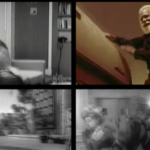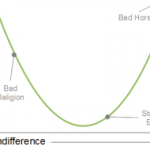Frames, Objects, and Such
April 17, 2011 - Features
I don’t much like talking about myself, but in the spirit of getting this blog going again, I’m gonna try to get out of my comfort zone a bit. This is a tangent following on an interesting conversation on adventure games I’ve been having with K. Cox of Your Critic is in Another Castle. In Cox’s latest post, she quoted a comment I’d made on her site and mentioned that it took a programmer’s perspective. This surprised me a little, because it hadn’t occurred to me that this is what I’d been doing.
On the other hand, that’s not a bad way to describe what I do here, when I do it. I have a programming background, and I do see games through that lens. And maybe that contributes to the stuff I write being a little on the inaccessible side. It’s something I struggle with. This post is my way of explaining why I do it anyway.
Programming isn’t the only baggage I bring to the table. I started out life as a film student. My pseudonym here comes from experimental filmmaker Hollis Frampton. Frampton made beautiful films out of structures inspired by mathematics, and treated his films as collections of sound and image to be arranged and rearranged in interesting ways, so I thought he was an appropriate inspiration for a game critic.
Frampton also takes me back to my memories of film school. The first film class I took was a survey course. Each week, the professors picked a theme, like color or sound design, and presented three hours worth of films that exemplified that theme. This would usually mean two or three short experimental films and one feature-length narrative movie. For the week on color, we watched Singin’ in the Rain and several shorts, one of which was Hollis Frampton’s Lemon.
You can watch Lemon here, if you’re up for five minutes of a lemon sitting on a table while a lamp very slowly moves around it. My classmates and I sure as fuck weren’t! We hated almost every experimental film we saw. We were a bunch of eighteen-year-old kids who wanted to be sexy auteurs, and this was not what we had signed up for. “What is this shit,” we asked ourselves and our professors. “Why must we be subjected to this audiovisual masturbation.”
But our professors knew what they were doing. The fact is that Singin’ in the Rain is just too much to take in. It’s a beautiful movie, and you can watch it and feel that it’s beautiful. But why? What techniques does it use, and how do those differ from the techniques of other films? These questions are hard to answer. Singin’ in the Rain is overwhelming, stuffed with images and language and personality. It’s doing things with color and light, but it’s always doing a lot of other things as well.
That’s where Lemon comes in. Lemon strips away all the confounding variables and looks at what a single light does to a single object. If you can’t understand how you feel when you watch Lemon, and why, you have no hope of understanding how Singin’ in the Rain works.
So that’s the attitude I took to this blog. If I’m going to understand how Shadow of the Colossus works, I figured, I needed to understand first how Execution works. And it’d be hard to do that without referring to code at all. With something so focused, what else is there to talk about? It’s a game that talks about death by writing registry values, after all.
To put it another way: you could talk about what makes Singin’ in the Rain great without ever making reference to cameras, but you’d be missing a lot. Still, you don’t need to be a camera operator to talk about framing or depth of field. You just need to watch a lot of movies very closely. That’s how I feel about code and game criticism. A critic doesn’t need to be a programmer, but adopting some concepts from programming seriously expands what a critic can say about a game.
Well, this has gone on way too long already, so I’ll end with that. Time to catch up on all the art games in my queue and put my money where my mouth is.


